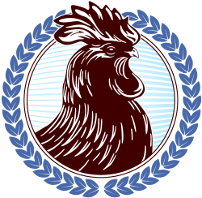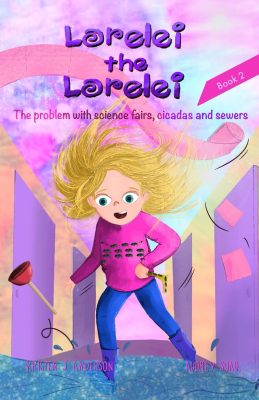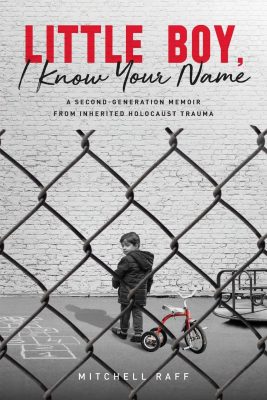|
Listen to or download this article:
|
 How does place shape who we are—and who we’ll become? In this memoir, Teaching in the Dark, Genét Simone puts that question to the test by recounting her first year as a teacher.
How does place shape who we are—and who we’ll become? In this memoir, Teaching in the Dark, Genét Simone puts that question to the test by recounting her first year as a teacher.
The initial year of teaching is never an easy feat, but for Simone it was especially challenging, and transformative. She spent it with Native students in the remote island village of Shishmaref, on the Arctic edge of Alaska—no small wonder the school year became an unforgettable one.
Today, Simone has decades of teaching experience to draw upon. Yet, in this memoir she rarely employs her present voice to reflect on the past. Instead, the narrator remains in the moment: a young and inexperienced Simone, who only knows that she feels destined to be a teacher. When she signs up for the Shishmaref teaching job, she doesn’t even realize that it’s on an island.
Equipped with snow boots and passion, she arrives on the island only to realize just how unprepared she is.
She must navigate unfamiliar terrain on the windswept land before the school year even starts. Conveniences that are common elsewhere, from stores to flushing toilets, are hard to come by in Shishmaref. Simone narrates these early days with vigor and levity, allowing readers permission to laugh alongside her at the mishaps. Simone even lets us in on the time she tipped a snowmobile over while trying to plow through a pair of snowdrifts, spilling the garbage she was hauling across the road.
This lighthearted book is also laced through with necessary moments of seriousness. Simone finds herself confronting questions about herself and her place in the world. Many of the questions are too big for her to answer, but the reflections are still welcome. Though this isn’t an instructive book, she teaches through example, inspiring readers to think deeply about interactions with people from other cultures.
As the school year begins, she learns the Native people of Shishmaref are grappling with the recent and ongoing impacts of colonialism.
They’d rather be speaking their Native language, picking berries, and hunting than sitting at a desk and speaking English. The Western-style school where she teaches runs counter to their culture, and the students often struggle with tasks like reading, math, and attendance. Yet Simone starts to find ways to connect with them. The student newspaper she helps run is a great success, because it becomes an outlet for her students’ passion about their community and culture. She keeps looking for more ways to understand her pupils better while also keeping her spirits up, as lesson plans fail, and the darkness of winter grows longer each day.
In spite of the many surprises and mishaps Simone experiences, a sense of tediousness starts to creep into the school year. For a long time, the snow and the dark days seem endless.
Some of the brightest parts of the book come when Simone steps out of the classroom, such as her alcohol-fueled Thanksgiving trip with fellow teachers. (Though it’s not terribly raucous, the getaway provides palpable relief from teaching’s monotony.) But the most touching moments come from interactions with her students outside the classroom. She sees them at their best when they’re able to express their culture and the love they have for their land. Simone has one such experience when she takes her students to a ski meet, watching as they rise to surmount unexpected challenges.
Simone paints a wonderful picture of nearby areas, both in their natural splendor and their importance to humans.
She visits the remote and rocky Little Diomede Island. There, a village with a brand-new school is perched on the island’s steep, icy cliff overlooking the sea. While Little Diomede is part of the US, its sister island, Big Diomede, sits on the other side of the Russian border—an artificial division that’s long separated Native families living on these islands. Yet, as in Shishmaref, Little Diomede’s traditions persist in spite of colonialism’s influence. In one visceral scene, Simone watches local men pull an immense Alaskan king crab from the ice, before the shifting ice floes force everyone to evacuate. Such danger and challenge is part of life for the people of Little Diomede.
Back in Shishmaref, spring is beginning to emerge, and Simone struggles to make sense of the year’s experiences.
What does it mean to try to improve students’ lives through education, while also representing the culture that oppresses them? Although she doesn’t answer questions like this conclusively, her pondering is touching and necessary. She even begins to doubt whether she’s made a real difference in these students’ lives. As the school year ends, she’s forced to ask herself whether she is able to help them more by staying, or by leaving.
Readers are left to wonder where Simone’s teaching career took her next, and whether she ever found answers to the hard questions of Shishmaref. The book’s remote location and narrative surprises make this story a page-turner. Though it may be cold and snowy on every village street, it’s still enticing to see what’s around the corner.
This is a tale of finding joy, appreciation, and acceptance in every unexpected moment, offering lessons of respect and supporting others that readers can take back even to warmer and sunnier climes.












Leave A Comment